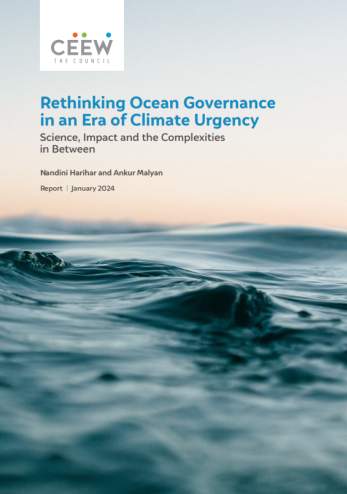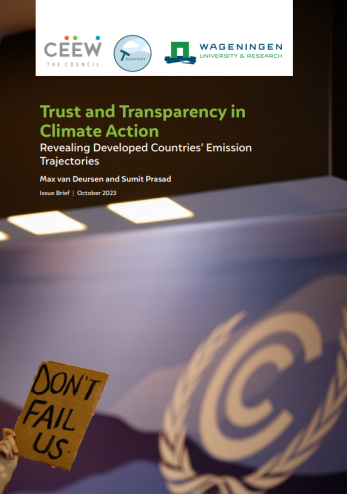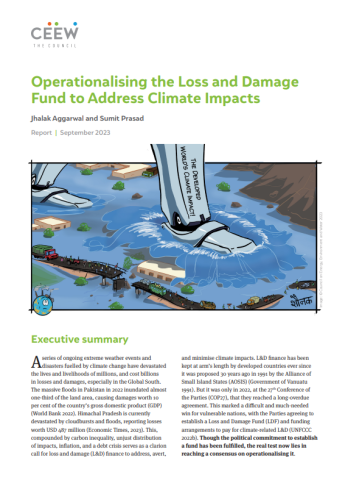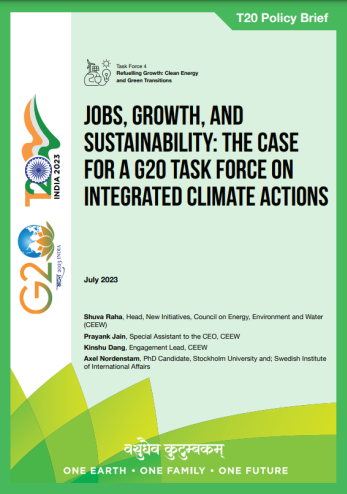



Suggested Citation: Prabhakar, Prerna and Hemant Mallya. 2023. Sustainability-driven Non-tariff Measures: Assessing Risks to India’s Foreign Trade. New Delhi: Council on Energy, Environment and Water.
International trade has been a key determinant of global economic growth and development. To accrue maximum benefits, international trade must be kept free from trade protectionism, which can take the form of tariff and non-tariff measures (NTMs). NTMs are policy measures other than ordinary customs tariffs that can have an economic effect on trade. In recent years, numerous NTMs have been implemented by developed countries to address issues of sustainability, environment, and climate change. This paper establishes the scope of the NTM problem, and flags some of the major sustainability-driven European Union regulations, and the associated risks to the Indian industry, and finally attempts to trigger policy thinking to respond and adapt to these measures.
While developed countries have lowered their tariff levels over time, they have gradually increased the issuance of NTMs. Regulatory differences between trading partners make compliance with these complex measures difficult for countries without equivalent regulations, leading to restrictions in market access, specifically for emerging economies such as India. Some of the recent regulations that can prove to be NTMs include the EU’s Carbon Border Adjustment Mechanism (CBAM) and Deforestation-free Regulation (EUDR), and the United States’ (US) Inflation Reduction Act (IRA).
International trade has been a key determinant of global economic growth and development. Merchandise trade constituted 35 per cent of India’s gross domestic product (GDP) in 2022 (World Bank 2022), and there is a continuous effort towards increasing export volumes in the future. The Government of India has set a target of USD 1 trillion by 2030 for merchandise exports (PIB 2022). To accrue maximum benefits, international trade must be kept free from trade protectionism, which can take the form of tariff and nontariff measures (NTMs).
NTMs are policy measures other than ordinary customs tariffs that can have an economic effect on trade. While developed countries have lowered their tariff levels over time, they have gradually increased the issuance of NTMs. Regulatory differences between trading partners make compliance with these complex measures difficult for countries with relatively lax regulations, leading to restrictions in market access, specifically for emerging economies such as India.
In recent years, numerous NTMs have been implemented by developed countries to address issues of sustainability, environment, and climate change. These include measures for circularity and energy efficiency, carbon footprint, waste management, water management, and sustainable forestry, to list a few. Recent examples of sustainability-driven international regulations and incentive mechanisms that can prove to be barriers to free trade include the EU’s Carbon Border Adjustment Mechanism (CBAM) and Deforestation-free Regulation (EUDR), and the United States’ (US) Inflation Reduction Act (IRA).
The proportion of environment-related NTMs (E-NTMs) in total NTM notifications to the World Trade Organization (WTO) has increased from 8 per cent in 1997 to 19 per cent in 2021 (WTO 2021).
NTMs have impacted India’s exports in the past, and case studies from the targeted sectors clearly establish this impact.
Informed by past experiences of adverse NTM-driven implications, it is imperative to assess the potential risk that Indian exporters could face and prepare them for adverse market scenarios. While Indian exports face NTM-related risks from most key trading partners, this paper focuses on EU NTMs as a brief and indicative exercise. Some of the EU regulations that were at the proposal stage at this paper’s inception have now been passed and notified to the WTO. Our analysis of the product categories targeted by the proposed EU regulations indicate the following -
With an increase in the issuance of E-NTMs by developed countries, India faces a serious challenge concerning its key export items. While India has taken significant steps to address this challenge, it still needs to develop a structured approach to deal with these measures to ensure that its exports are not impacted.
There are multiple ways in which we can ensure this readiness.
Non-Tariff Measures (NTMs) are policy measures other than ordinary customs tariffs that can have an economic effect on trade. Technical barriers to trade (TBT) and Sanitary and Phytosanitary (SPS) measures are the two widely used NTMs. TBT includes measures such as labelling, standards on technical specifications and quality requirements, and other measures protecting the environment. SPS measures include restrictions on substances, ensuring food safety, and those for preventing the dissemination of diseases or pests.
TBT and SPS are two widely used NTMs. Examples of TBT and SPS measures faced by India include registration, evaluation, authorisation and restriction of chemicals, eco-design requirements for power transformers, and control of wood packaging material used in the transport of specified commodities originating from India.
NTMs can result in exporters withdrawing from the foreign market or an increase in the exporting cost through additional compliance formalities that an exporter has to undergo.
Sustainability goals requires changes in the manufacturing processes, like a move towards circulaity, energy efficiency. A transition to these methods involve setting up of new rules, labelling, certifications etc, for the domestic industry. NTMs ensure similar quality standards for the imported items, and are therefore important for the overall sustainable development at the global level. If these measures are not consistent with the free trade rules, set by the World Trade Organisation (WTO), these can then prove to be barriers to trade.

Rethinking Ocean Governance in an Era of Climate Urgency

Trust and Transparency in Climate Action

Operationalising the Loss and Damage Fund to Address Climate Impacts

Jobs, Growth, and SustainabilityThe Case for a G20 Task Force on Integrated Climate Actions